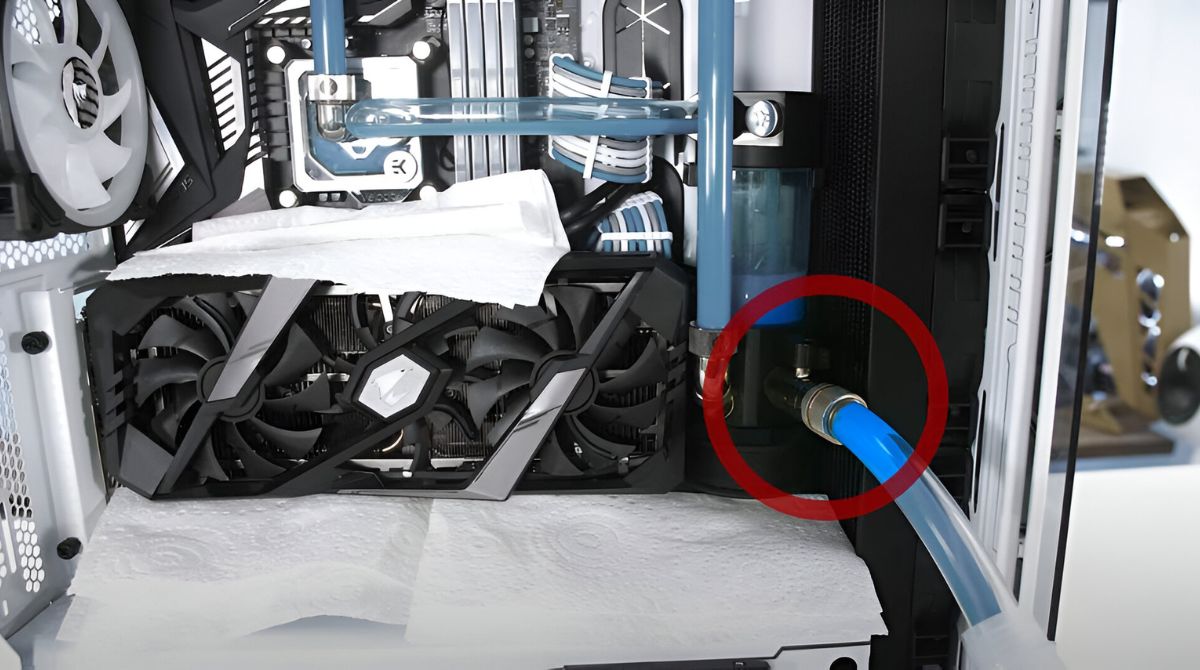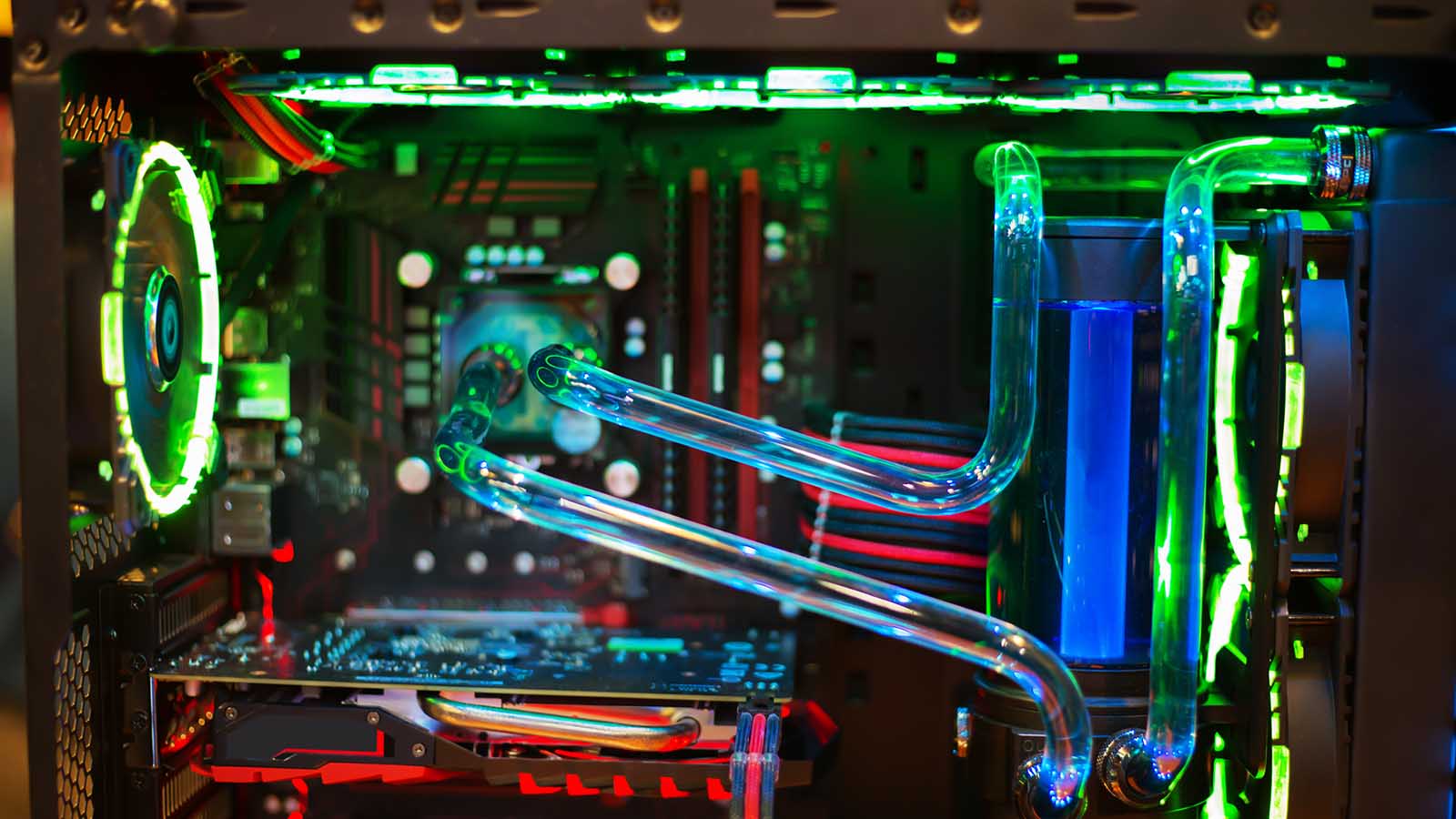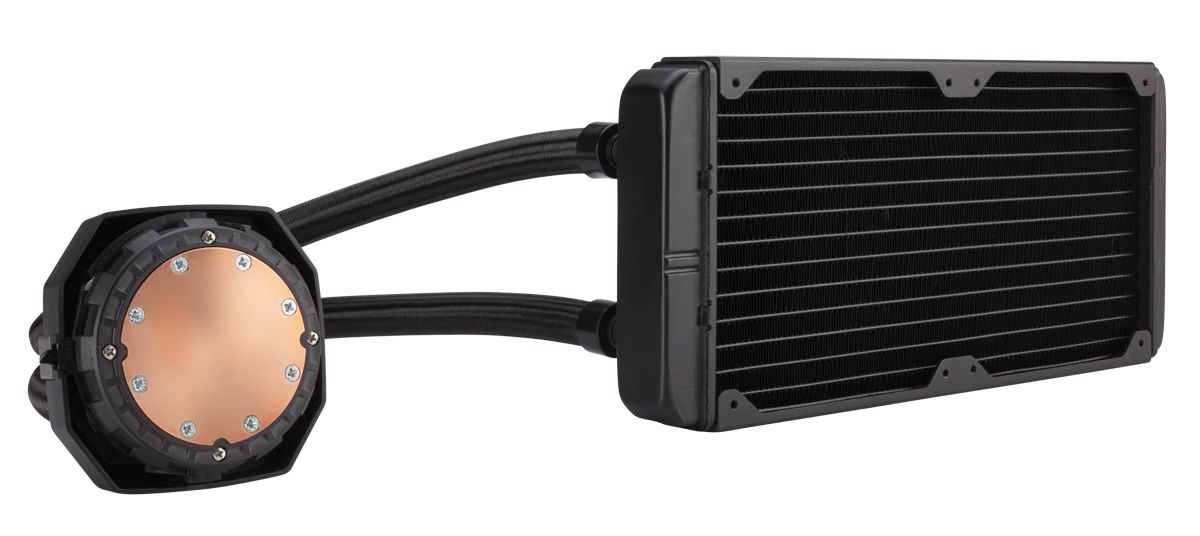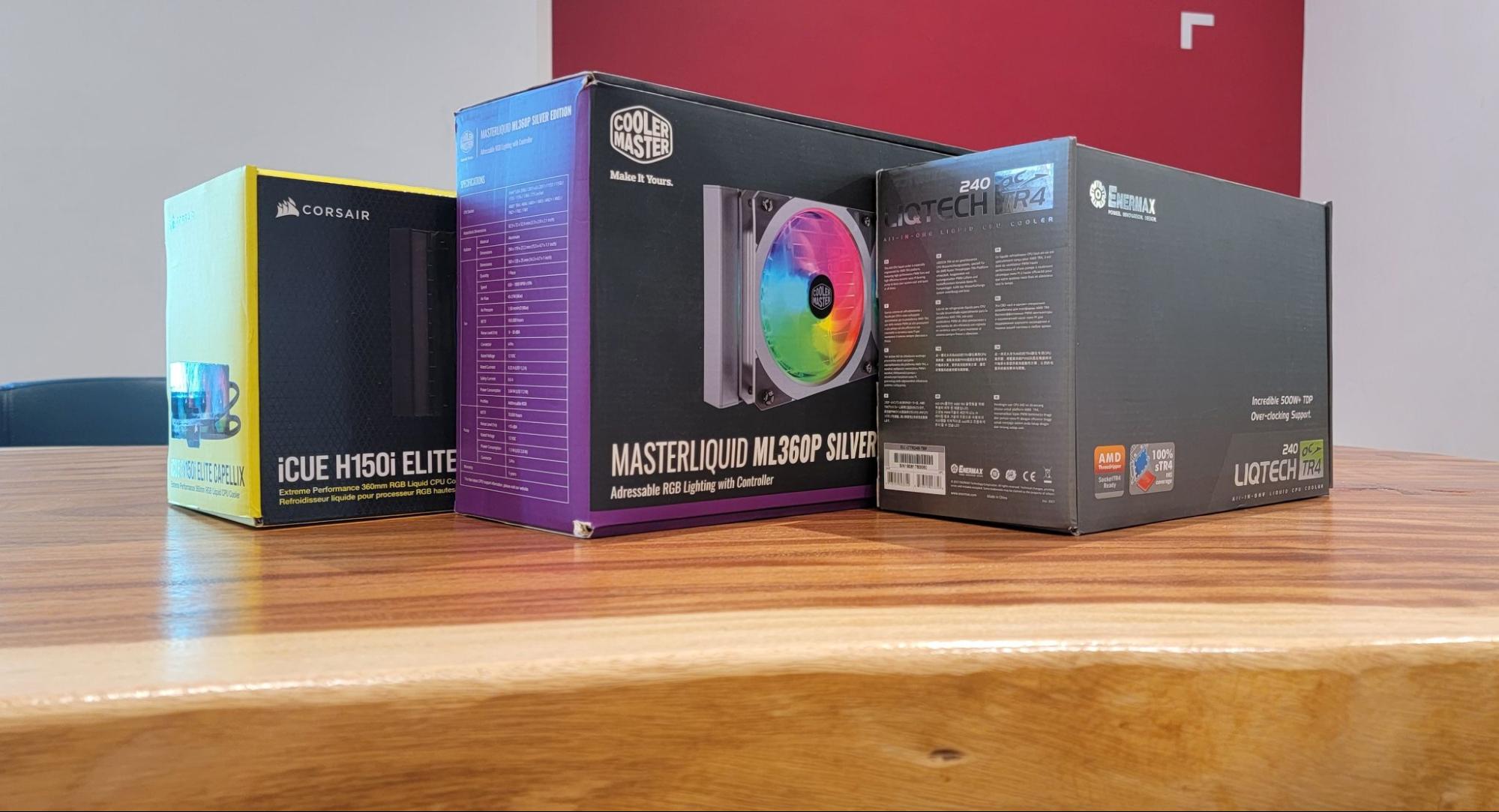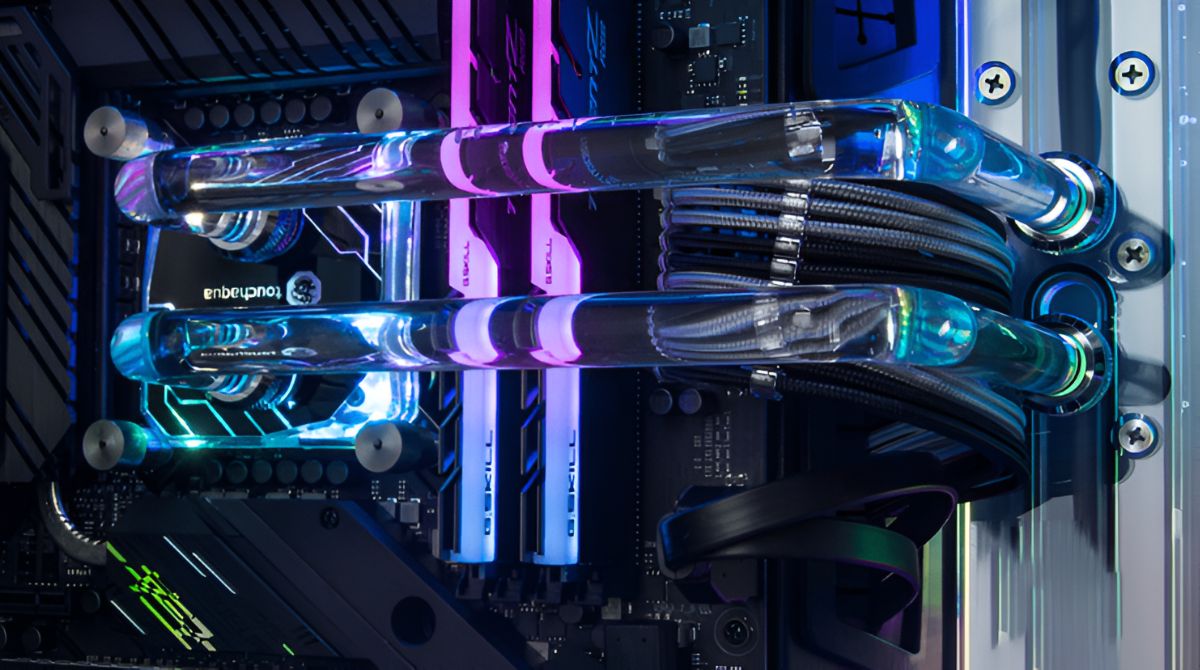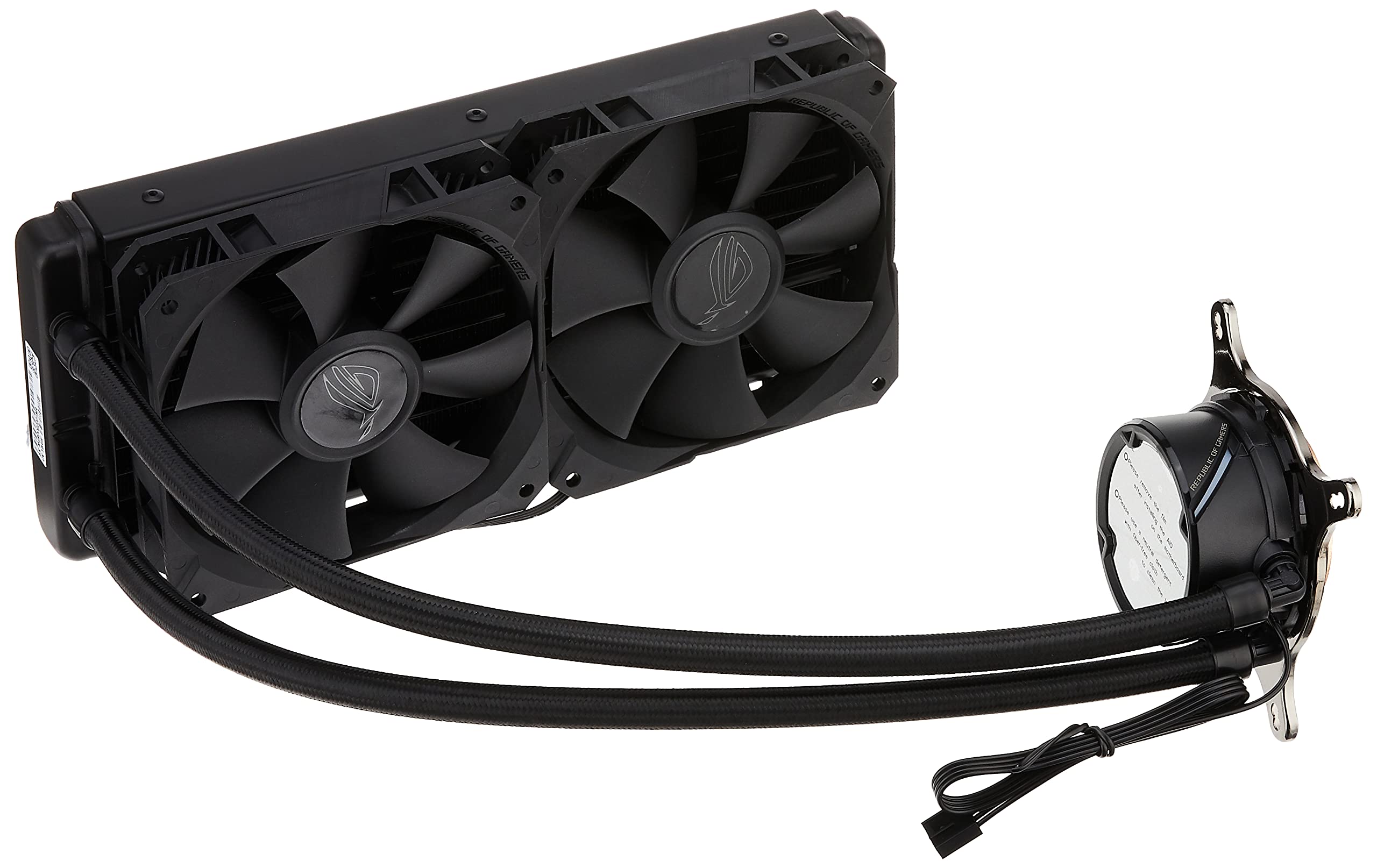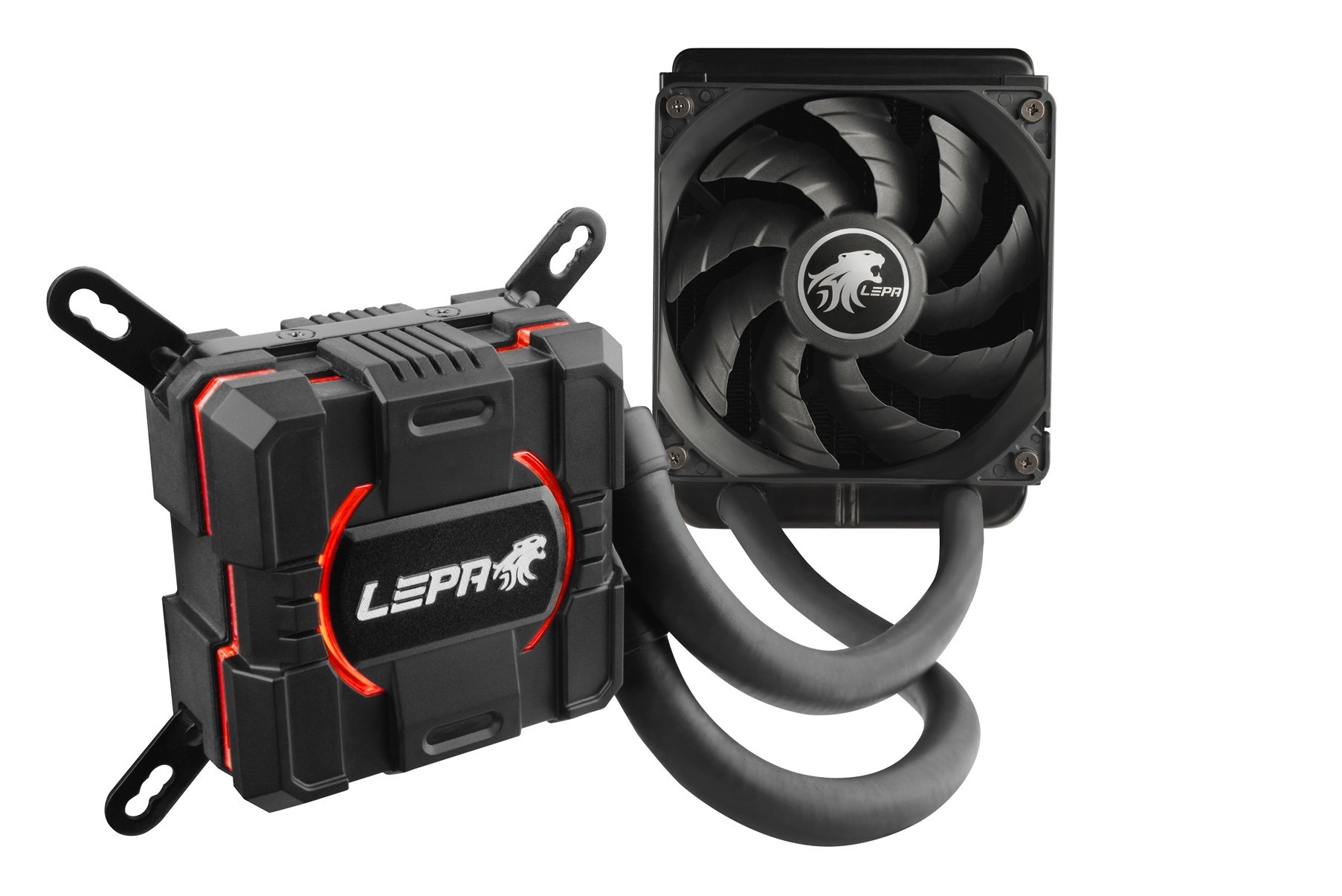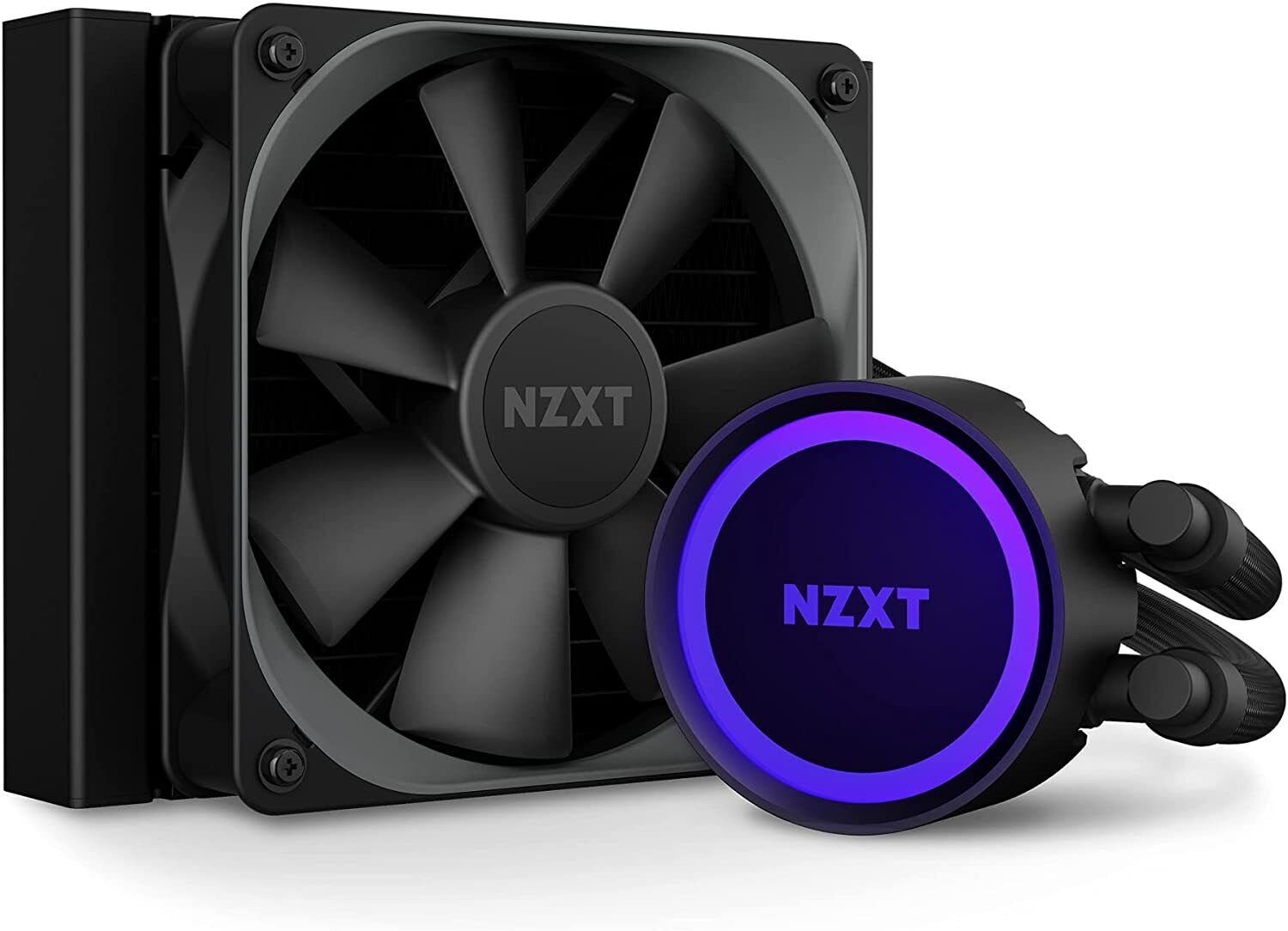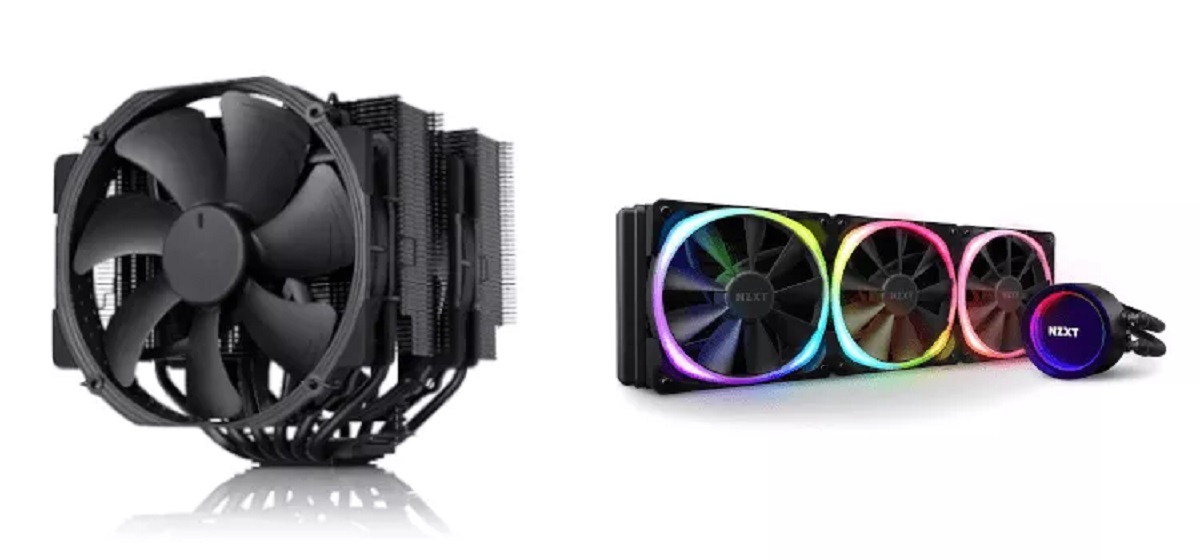Introduction
An All-in-One (AIO) CPU cooler is a popular choice among gamers, enthusiasts, and professionals who require efficient cooling for their computer processors. This compact and convenient cooling solution combines the functionality of a CPU block, radiator, and pump into a single unit, making it easy to install and maintain. However, one common concern that users often have is the possibility of an AIO CPU cooler leaking.
While the odds of an AIO CPU cooler leaking are generally low, it’s essential to understand the factors that can contribute to a potential leak. By understanding these factors and taking appropriate preventive measures, you can minimize the risk of encountering this issue.
In this article, we will explore the factors influencing the odds of an AIO CPU cooler leaking and provide guidance on how to prevent and handle a potential leak. Whether you are considering purchasing an AIO CPU cooler or already have one installed, this information will help you make an informed decision and ensure the longevity and reliability of your cooling system.
What is an AIO CPU Cooler?
An All-in-One (AIO) CPU cooler is a type of cooling solution specifically designed for computer processors. Unlike traditional air coolers, which consist of a heatsink and a fan, AIO CPU coolers incorporate multiple components into a single unit, providing efficient cooling performance in a compact form factor.
An AIO CPU cooler typically consists of three main components: a CPU block, a radiator, and a pump. The CPU block is responsible for transferring heat from the CPU to the coolant. It is composed of a copper or aluminum base plate with channels or fins to facilitate heat transfer. The radiator, usually made of aluminum, acts as a heat exchanger and dissipates the heat absorbed by the coolant. The pump, powered by electricity, circulates the coolant through the CPU block and the radiator, ensuring a constant flow of cool liquid to dissipate heat.
One of the key advantages of an AIO CPU cooler is its ease of installation. Unlike custom water cooling loops that require complex tubing and fittings, AIO coolers come pre-assembled and filled with coolant. This makes them a popular choice among users who want the benefits of liquid cooling without the hassle of building a custom loop.
AIO CPU coolers are compatible with a wide range of computer processors, from mainstream CPUs to high-end, overclockable models. They are available in various sizes, with different radiator and fan configurations, allowing users to choose a cooler that fits their case and cooling requirements.
How does an AIO CPU Cooler Work?
An AIO CPU cooler works by utilizing a combination of liquid cooling and heat dissipation to keep the processor temperature in check. Let’s take a closer look at how each component of the AIO cooler contributes to its functionality:
- CPU Block: The CPU block serves as the interface between the processor and the cooling system. It is mounted directly on top of the CPU and utilizes a thermal interface material (TIM) to ensure efficient heat transfer. The block contains channels or fins through which the liquid coolant flows, absorbing heat from the CPU.
- Radiator: The radiator is responsible for dissipating the heat absorbed by the coolant. It consists of a series of metal fins attached to tubes. The coolant flows through these tubes, and as it moves, the heat is transferred to the fins. The radiator is equipped with fans that blow air over the fins, aiding in heat dissipation.
- Pump: The pump plays a crucial role in the functioning of an AIO CPU cooler. It circulates the liquid coolant through the CPU block and the radiator, ensuring a continuous flow of cooler liquid to remove heat. The pump is powered by electricity and typically operates at a consistent speed to maintain proper coolant flow.
As the CPU generates heat during operation, the heat is transferred to the liquid coolant through the CPU block. The pump then pushes the heated coolant towards the radiator, where the heat is dissipated into the surrounding air. The radiator fans help to enhance air circulation, facilitating efficient cooling.
Overall, the AIO CPU cooler’s closed-loop system allows for effective heat transfer and temperature regulation. By utilizing liquid cooling and a radiator, it provides superior cooling performance compared to traditional air coolers. The compact design of the AIO cooler makes it suitable for various computer builds, including small form factor systems, where space is limited.
Common Causes of Leaks in AIO CPU Coolers
While AIO CPU coolers are generally reliable, there are a few common causes that can lead to leaks. Understanding these causes can help you take appropriate measures to prevent leaks and ensure the longevity of your cooling system. Here are the most common factors contributing to AIO CPU cooler leaks:
- Manufacturing Defects: In some cases, leaks can be attributed to manufacturing defects. Poorly sealed joints, weak tubing connections, or faulty components can result in coolant leakage. While such defects are relatively rare, they can occur, and it’s important to purchase AIO coolers from reputable manufacturers that prioritize quality control.
- Aging and Wear: Over time, the materials used in AIO coolers can deteriorate, leading to leaks. The rubber tubing, for example, may become brittle or develop cracks, compromising the integrity of the cooling system. Additionally, repeated heat cycles can cause the pump or seals to degrade, increasing the likelihood of leaks.
- Physical Damage: Accidental damage or mishandling of the AIO cooler can cause leaks. Rough handling during installation, transportation, or maintenance can result in damaged tubing, loose fittings, or even punctured radiators. It’s important to handle the AIO cooler with care and follow proper installation procedures to minimize the risk of physical damage.
- Extreme Temperatures: Extreme temperatures, either hot or cold, can affect the performance and reliability of the AIO cooler. Exposure to excessive heat or extreme cold can cause the materials to expand or contract, leading to cracks or leaks. It’s essential to keep your computer system in a well-ventilated and temperature-controlled environment to prevent any adverse effects on the AIO cooler.
- Coolant Evaporation: In rare cases, coolant evaporation can occur over an extended period, leading to a loss of liquid and potential leaks. This can be caused by a combination of factors such as a small leak or gradual evaporation due to high operating temperatures. It’s important to periodically check the coolant level and top up if necessary, following the manufacturer’s guidelines.
By being aware of these common causes of leaks and taking preventive measures, such as careful handling, regular maintenance, and monitoring, you can minimize the risk of encountering a leak in your AIO CPU cooler.
Top Factors Influencing the Odds of AIO CPU Cooler Leaking
Several factors can influence the odds of an AIO CPU cooler leaking. Understanding these factors can help you make informed decisions and take appropriate measures to minimize the risk of leaks. Here are the top factors to consider:
- Quality of Components: The quality of the components used in the AIO cooler plays a significant role in its durability and reliability. AIO coolers from reputable manufacturers that prioritize high-quality materials and stringent quality control measures are less likely to develop leaks compared to cheaper alternatives.
- Installation Accuracy: Proper installation is crucial to ensure the optimal performance and longevity of an AIO CPU cooler. Incorrectly installed coolers may have compromised connections or misaligned components, increasing the risk of leaks. It’s essential to carefully follow the manufacturer’s installation instructions to ensure a secure and leak-proof setup.
- Maintenance and Cleaning: Regular maintenance and cleaning can significantly impact the lifespan and performance of an AIO CPU cooler. Dust and debris accumulation can obstruct airflow and cause overheating, potentially leading to leaks. Cleaning the radiator, fans, and ensuring the cleanliness of the surrounding components can help prevent such issues.
- System Vibrations: Constant vibrations from the computer system, particularly if it’s not adequately dampened or secured, can put stress on the AIO cooler’s connections. Over time, these vibrations can cause fittings to loosen and potentially lead to leaks. Ensuring proper mounting and using vibration-dampening measures can help mitigate this risk.
- Operating Conditions: The operating conditions of the AIO CPU cooler can influence its susceptibility to leaks. Factors such as high ambient temperatures, prolonged heavy usage, or extreme overclocking can put additional strain on the cooler and increase the chances of leaks. Keeping the system within acceptable temperature limits and avoiding excessive overclocking can help maintain the integrity of the AIO cooler.
By considering these factors and taking appropriate precautions, you can minimize the odds of your AIO CPU cooler developing leaks. Investing in a high-quality cooler, ensuring proper installation, regular maintenance, and monitoring the operating conditions are crucial to ensuring the longevity and reliability of your cooling system.
The Impact of Cooler Maintenance on Leak Probability
The maintenance of your AIO CPU cooler plays a significant role in determining the probability of leaks. Regular maintenance not only ensures optimal performance but also helps identify and address any potential issues that could lead to leaks. Here are the key ways in which cooler maintenance impacts the likelihood of leaks:
- Dust and Debris Buildup: Dust and debris can accumulate on the radiator fins, fan blades, and other components over time. This buildup restricts airflow, leading to higher operating temperatures and potentially putting stress on the cooler. Regular cleaning of the cooler, including dusting the radiator and fans, helps prevent overheating and reduces the risk of leaks.
- Coolant Levels: Monitoring the coolant levels in your AIO CPU cooler is essential. Coolant evaporates slowly over time due to normal usage and the heating and cooling cycles of the system. Inadequate coolant levels can cause the pump to run dry, resulting in increased friction and potential pump failure. Regularly checking and topping up the coolant, following the manufacturer’s guidelines, helps maintain proper cooling and reduces the chance of leaks.
- Inspecting Tubing and Fittings: The tubing and fittings of the AIO cooler are critical components that can develop leaks if compromised. Regularly inspecting the tubing for any signs of wear, cracks, or damage is essential. Pay close attention to the tubing near fittings, as they can be prone to leaks. Additionally, ensure that fittings are securely tightened. If any issues are detected, immediate action should be taken to repair or replace the affected parts.
- Monitoring System Vibrations: System vibrations can gradually loosen fittings and compromise connections in the AIO cooler. Regularly checking and tightening fittings can help prevent leaks caused by vibrations. Utilizing rubber dampening pads or mounts can also help reduce vibrations and minimize their impact on the cooler.
- Regular System Inspections: Conducting routine inspections of the entire cooling system, including the AIO CPU cooler, is vital. Look for any signs of coolant leakage, moisture buildup, or unusual odors. These can be warning signs of a potential leak. Early detection allows for prompt action, minimizing the risk of further damage or components being affected.
By prioritizing regular maintenance and addressing potential issues promptly, you can significantly reduce the probability of leaks in your AIO CPU cooler. Adhering to the manufacturer’s maintenance guidelines, cleaning the cooler regularly, monitoring coolant levels, inspecting tubing and fittings, and being proactive in addressing any concerns are essential steps in maintaining a reliable and leak-free cooling system.
Signs of a Potential Leak in an AIO CPU Cooler
Being able to identify the signs of a potential leak in an AIO CPU cooler is crucial for preventing any damage to your system and addressing the issue promptly. Here are some common signs that may indicate a leak in your AIO CPU cooler:
- Visible Moisture or Dampness: If you notice any moisture or dampness around the CPU block, radiator, or tubing fittings, it could be a sign of a leaking cooler. Check for any liquid accumulation or wet spots, as this indicates a potential leak in the system.
- Low Coolant Levels: Insufficient coolant levels in the AIO CPU cooler can suggest a leak. If you regularly monitor the coolant levels and notice a significant drop without any apparent reason, it’s important to investigate further and address the issue to prevent any potential damage.
- Unusual Noises: Leaks can sometimes cause air to enter the AIO cooler, resulting in strange gurgling or bubbling noises. If you notice any unusual sounds coming from the cooler, especially during system startup or under heavy load, it could indicate a leak in the system.
- Increased Temperatures: Leaks in an AIO CPU cooler can lead to reduced cooling efficiency, resulting in higher processor temperatures. If you observe a sudden and significant increase in CPU temperatures during normal operation, it could be a sign of a leak affecting the cooler’s performance.
- Corrosion or Rust: Over time, leaks can cause corrosion or rust on the cooler’s components, especially around the fittings or radiator. Inspect the cooler for any signs of discoloration, rust, or corrosion, as this may indicate a past or ongoing leak.
- Burning Smell: In more severe cases, a leak in the AIO CPU cooler can result in coolant coming into contact with sensitive components, such as electrical circuits or the motherboard. This can produce a distinct burning smell. If you detect any unusual odors coming from your system, it is important to investigate further to identify the source.
If you notice any of these signs or suspect a leak in your AIO CPU cooler, it is crucial to take immediate action. Shut down your system, disconnect power, and inspect the cooler carefully to locate and address the leak. Contacting the manufacturer or seeking professional assistance may be necessary to ensure proper repairs and prevent further damage.
Steps to Prevent AIO CPU Cooler Leaks
Preventing leaks in your AIO CPU cooler is essential to maintain the performance and longevity of your cooling system. By following these steps, you can minimize the risk of leaks and ensure the reliable operation of your AIO CPU cooler:
- Purchase from Reputable Brands: Invest in AIO CPU coolers from trusted and reputable manufacturers. Quality components and rigorous manufacturing processes reduce the chances of leaks and ensure the overall durability and reliability of the cooler.
- Proper Installation: Follow the manufacturer’s installation instructions carefully. Ensure that the cooler is securely mounted and that all connections are tight and leak-free. Pay attention to proper alignment and orientation of the cooler components to prevent any potential stress on the fittings or tubing.
- Maintain a Clean System: Regularly clean and dust your computer system, including the AIO CPU cooler. Dust and debris can accumulate on the radiator fins, obstruct airflow, and lead to overheating. Use compressed air or a soft brush to remove dust from the cooler and surrounding components.
- Monitor Coolant Levels: Check the coolant levels in your AIO CPU cooler regularly. Follow the manufacturer’s guidelines for topping up the coolant, if necessary. Maintaining proper coolant levels ensures optimal cooling performance and reduces the risk of the pump running dry or developing air pockets.
- Inspect and Maintain Tubing: Regularly inspect the tubing for any signs of wear, cracks, or damage. Pay close attention to the areas near fittings, as they are prone to leaks. If you observe any issues, such as fraying or cracks, consider replacing the tubing to prevent potential leaks from developing.
- Avoid Extreme Temperatures: Ensure your computer system operates within the temperature limits recommended by the manufacturer. Avoid exposing the system to extreme heat or cold, as this can impact the longevity of the AIO CPU cooler components and increase the likelihood of leaks. Proper ventilation and adequate airflow help maintain optimal operating temperatures.
- Handle with Care: When handling the AIO CPU cooler, be gentle and avoid unnecessary bumps, drops, or rough handling. Mishandling can cause damage to the tubing, fittings, or other components, leading to leaks or compromised performance. Take caution during installation, maintenance, and transportation of your system.
By adhering to these preventative measures, you can significantly reduce the risk of leaks in your AIO CPU cooler. Regular maintenance, proper installation, and careful handling ensure the optimal functioning and reliability of your cooling system, allowing you to enjoy efficient and worry-free cooling for your CPU.
What to Do if Your AIO CPU Cooler Leaks
Discovering a leak in your AIO CPU cooler can be a concerning situation, but it’s important to take immediate action to minimize any potential damage. Follow these steps if you find that your AIO CPU cooler is leaking:
- Shut Down Your System: Turn off your computer system immediately to prevent further damage. Shutting down the system cuts off power and helps ensure the safety of your components.
- Disconnect the Power: Unplug the power cord from the wall socket and remove any other connections that supply power to your system. This step is crucial to avoid any electrical mishaps or short circuits.
- Contain the Liquid: If possible, place absorbent materials, such as towels or paper towels, around the leak to soak up any liquid. This prevents it from spreading and reaching other components or surfaces.
- Inspect the Damage: Assess the extent of the leak and its impact on your system. Look for any signs of moisture, corrosion, or damage caused by the coolant. Take note of any affected components or areas of concern.
- Contact Technical Support: Reach out to the manufacturer’s technical support or customer service immediately. They can provide guidance on next steps, offer troubleshooting advice, or provide information on warranty coverage or repair services.
- Document the Damage: Take pictures or video footage of the leaked areas and any visible damage. This documentation can be helpful when filing a warranty claim or communicating with technical support or repair services.
- Follow Manufacturer’s Guidance: Based on the manufacturer’s recommendations or the advice of technical support, follow the instructions on how to proceed. They may require you to ship the cooler for repair, send replacement parts, or direct you to an authorized service center in your area.
- Clean and Dry Affected Components: Once the leaking issue is addressed, carefully clean and dry any affected components or surfaces. Use a dry cloth or towel to remove any remaining liquid and ensure that everything is thoroughly dry before reassembling or powering on your system.
- Ensure Proper Installation: If you receive replacement parts or repair the AIO CPU cooler, ensure proper installation according to the manufacturer’s instructions. Double-check all connections and fittings to prevent any potential future leaks.
- Monitor System Performance: After resolving the leak issue, monitor your system closely for any unusual behavior or performance issues. Keep an eye on temperatures, coolant levels, and any signs of leakage to ensure that the issue has been fully resolved.
Remember, dealing with a leaking AIO CPU cooler can be complex, so it’s always best to consult with the manufacturer’s technical support or seek professional assistance to ensure proper resolution of the issue and the safety of your system.
Conclusion
An AIO CPU cooler is a popular cooling solution for computer processors due to its efficiency, compact design, and ease of installation. While the odds of an AIO CPU cooler leaking are generally low, it’s crucial to understand the common causes and take preventive measures to minimize the risk.
By purchasing AIO CPU coolers from reputable brands, properly installing and maintaining them, and monitoring for any signs of potential leaks, you can significantly reduce the chances of encountering this issue. Regular maintenance, including cleaning the cooler, inspecting tubing and fittings, and monitoring coolant levels, is essential to ensure optimal cooling performance and prevent leaks.
If you do discover a leak, it’s important to take immediate action to mitigate any potential damage. Shut down your system, disconnect the power, and contain the liquid. Contact the manufacturer’s technical support for guidance and follow their instructions on how to proceed.
By being proactive and attentive, you can maintain a reliable and leak-free AIO CPU cooler, prolonging its lifespan and preserving the optimal performance of your computer system.







